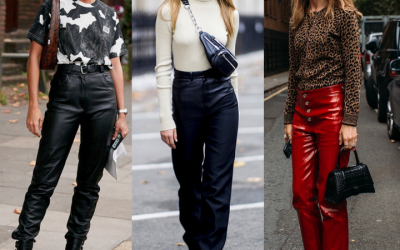It’s been almost a century and a half since Levi Strauss & Co. released their first Levi’s jeans.
Today, Levi’s jeans are one of the most popular and well-known brands of denim jeans in the world.
They are known for their high quality and durability, as well as their stylish and timeless designs.
And unless you’ve followed a strict dress code during your lifetime, chances are you’ve had – or still have – a pair of Levi’s somewhere in your wardrobe.
And when you’re such a global fashion powerhouse, it’s not uncommon for people to raise questions about your manufacturing ethics.
So how sustainable is Levi’s actually? Let’s find out.
Levi’s Sustainability: A Brief and Turbulent History Of the Denim Brand
Questions have been raised surrounding Levi’s sustainability practices in the past.
But believe it or not – it started promising. Back in 1991, this denim brand published a revolutionary code of conduct concerning ethical practices.
With these terms, Levi’s became a pioneer on this topic in the fashion industry. According to the brand, this document influenced a plethora of fashion companies to follow the same standards in the future.
But the reality was different.
In the following years – and up until recently – the brand was hit with multiple accusations concerning the breach of ethics.
For instance, in 2007 Levi Strauss & Co. refused to commit to a living wage for their workers which got them suspended from Ethical Trading Initiative (Business Insider).
However, others argue that Levi’s is actually doing a lot to promote sustainability and that its products are more environmentally friendly than those of many other companies.
This is mostly due to the company’s efforts to start walking the “sustainable” walk in recent years.
So let’s see how they fare in a new, eco-friendly world.
Levi’s Sustainability Efforts – Recent Years
Recently, Levi’s started acknowledging their past mistakes, while also becoming more transparent and proactive.
“And look, we haven’t always gotten it right.” – Levi’s state in their new sustainability statement – “Becoming a more sustainable clothing brand is important to us, and it’s a work in progress.
The brand now publishes a sustainability report that covers all successful efforts to contribute to the environment and ethical practices.
It also presents long-term goals that should turn their business into a fully ethical brand.
Let’s see how they fared in these aspects so far.
Levi’s and Environment
Over the years, critics have argued that the company is not doing enough to reduce its environmental impact. There were also unavoidable accusations circling around.
In 2012, Greenpeace made a pretty strong claim, blaming a few renowned fashion brands – including Levi’s – for horrific water pollution in Mexico.
Since then, the company promised to reduce chemical usage common for treating and coloring their products.
They’ve reduced their water consumption, claiming to have saved over 4,2 billion liters of water through their Water<Less program.
But using less water was just the tip of the iceberg. They also have a goal to reduce their greenhouse gas emissions by 40% in their supply chain.
Levi’s and Sustainable Practices
Levi’s is already using more sustainable materials but is also working to increase product longevity.
Their 2021. “Buy Better, Wear Longer” campaign is spearheaded by the likes of pop star Jaden Smith and aims to raise awareness of the negative impact of fast fashion.
Among other efforts, they’ve implemented recycling programs and have started to use organic cotton whenever possible.
In fact, they claim almost 75% of their certified organic cotton comes from sustainable sources.
Furthermore, they’ve incorporated cottonized hemp into their materials. Why? Because cottonized hemp uses less water and doesn’t compromise soil as much as cotton.
They’ve also started making denim from sustainably harvested wood – grown in responsibly managed forests while reusing water.
Levis and Labor Practices
Durable clothes, recycled materials, and the well-being of our planet are crucial, but so are the working conditions of Levi’s manufacturers.
And human rights of fashion workers is where Levi’s had their fair share of issues in the past.
According to the business report, Levi’s emphasizes gender equality, worker health, employee development, and giving back to various communities.
However, since 2007 there’s been a huge warning sign when it comes to paying living wages for their workers across the supply chain.
There’s another question mark. According to Goodonyou, almost none of Levi’s supply chain is certified by labor standards yet.
Therefore, the working people are still waiting for the company to put the money where their mouth is.
Levis and Animal Welfare
Animal welfare is another indicator of whether a fashion brand’s environmental intentions.
According to their Animal welfare policy they’re fully committed to protecting animal life.
Their policy is aligned with Five Freedoms, meaning that supply chains that source animal products must be tracked if possible, to ensure ethical practices.
The policy also prohibits the use of angora, fur, or other exotic animal skin. However, they still frequently use down feathers, leather, and wool but don’t declare their sources.
And while they claim to use wool from non-mulesed sheep, according to Goodonyou, their animal rating is still “Not Good Enough”.
A Rocky Road to a Sustainable World
It’s apparent that Levi’s decades of neglect of the planet had come back to bite them.
And the latest most sustainably designed collection is just the beginning of the journey to a fully sustainable brand.
Nevertheless, the signs are there and it seems Levi Strauss has started making better choices on their road to zero-waste fashion.
Of course, it’s still too early to say how effective these initiatives will be but there are traces of good news for the future of the industry.




